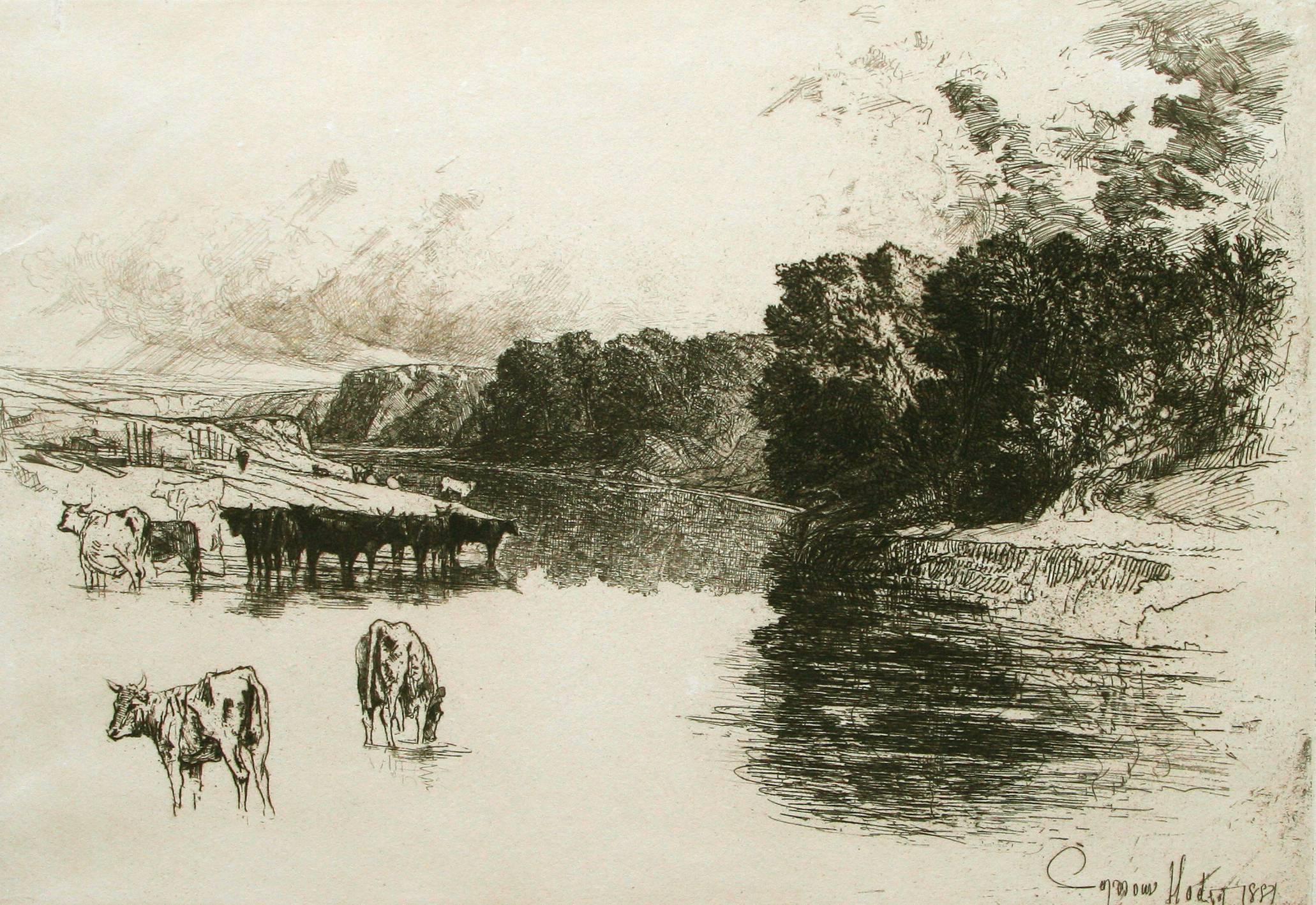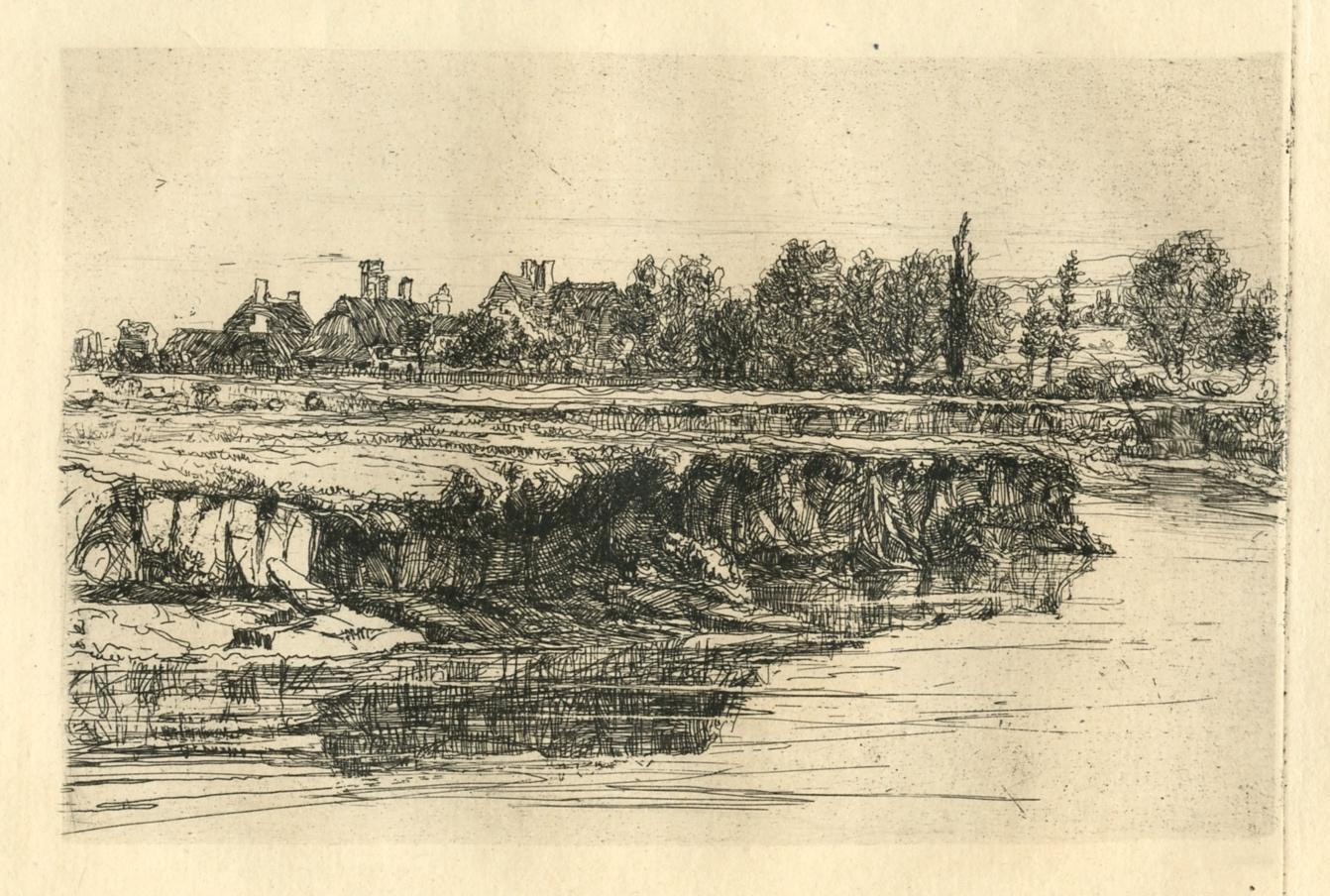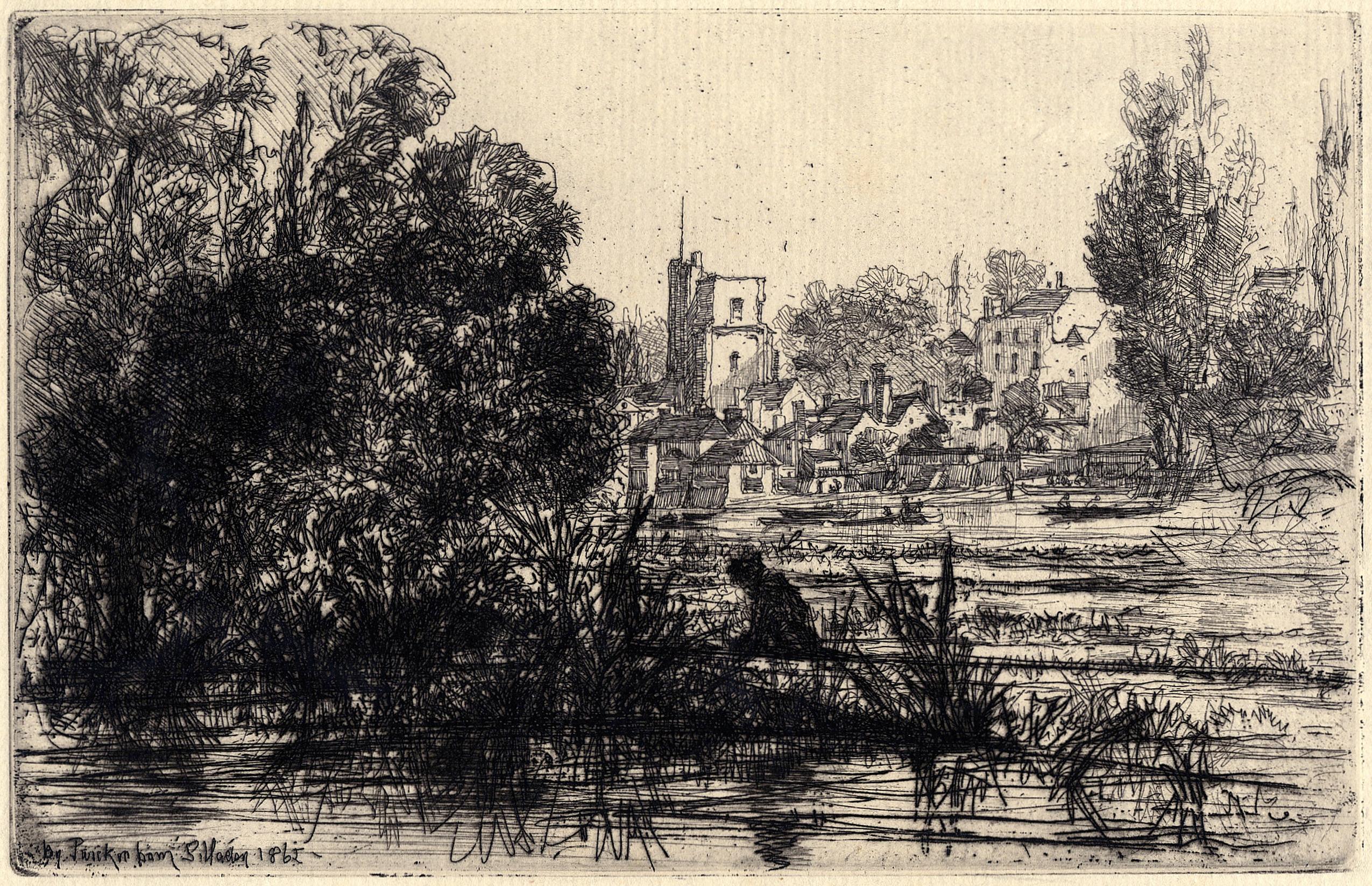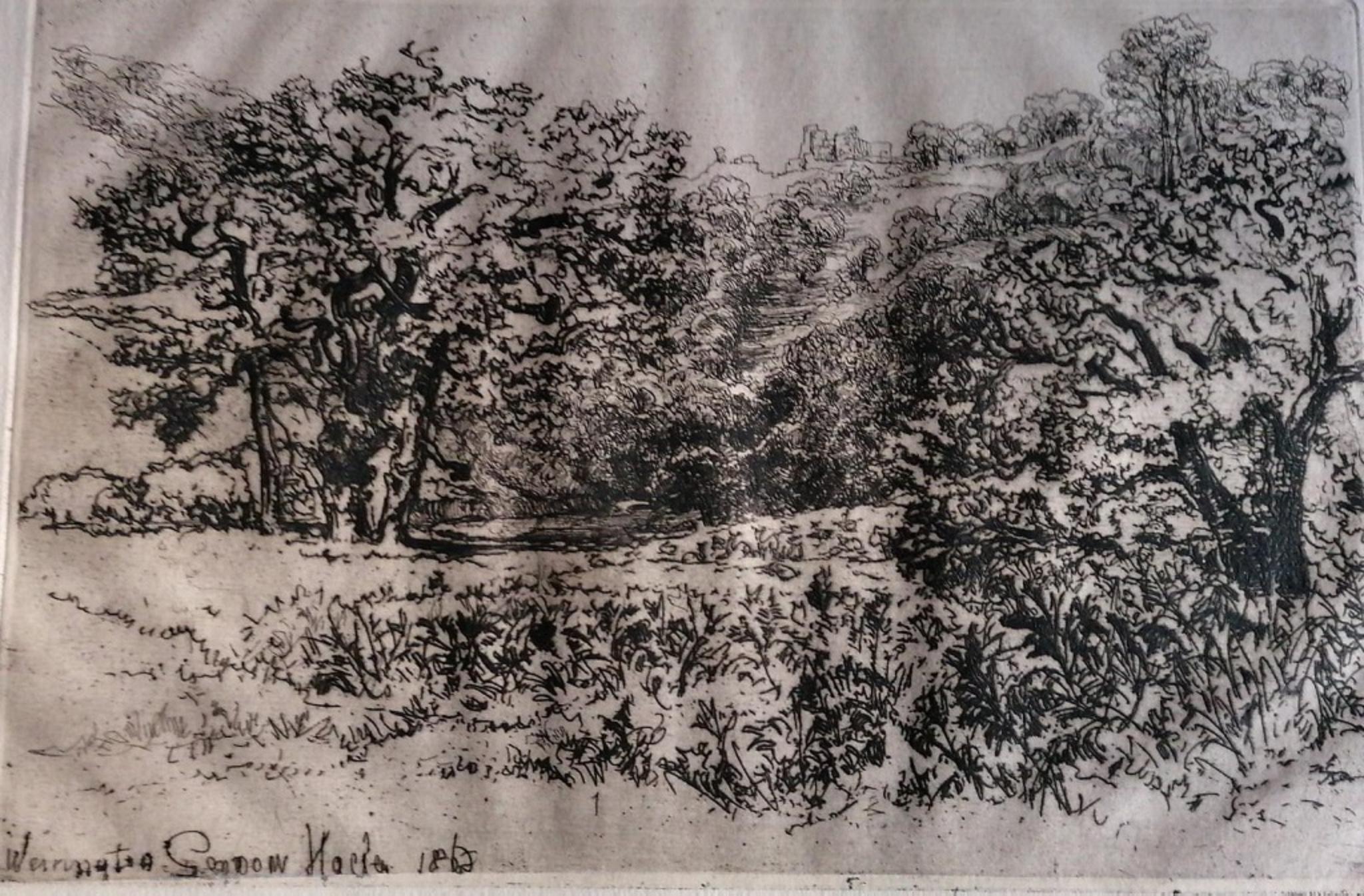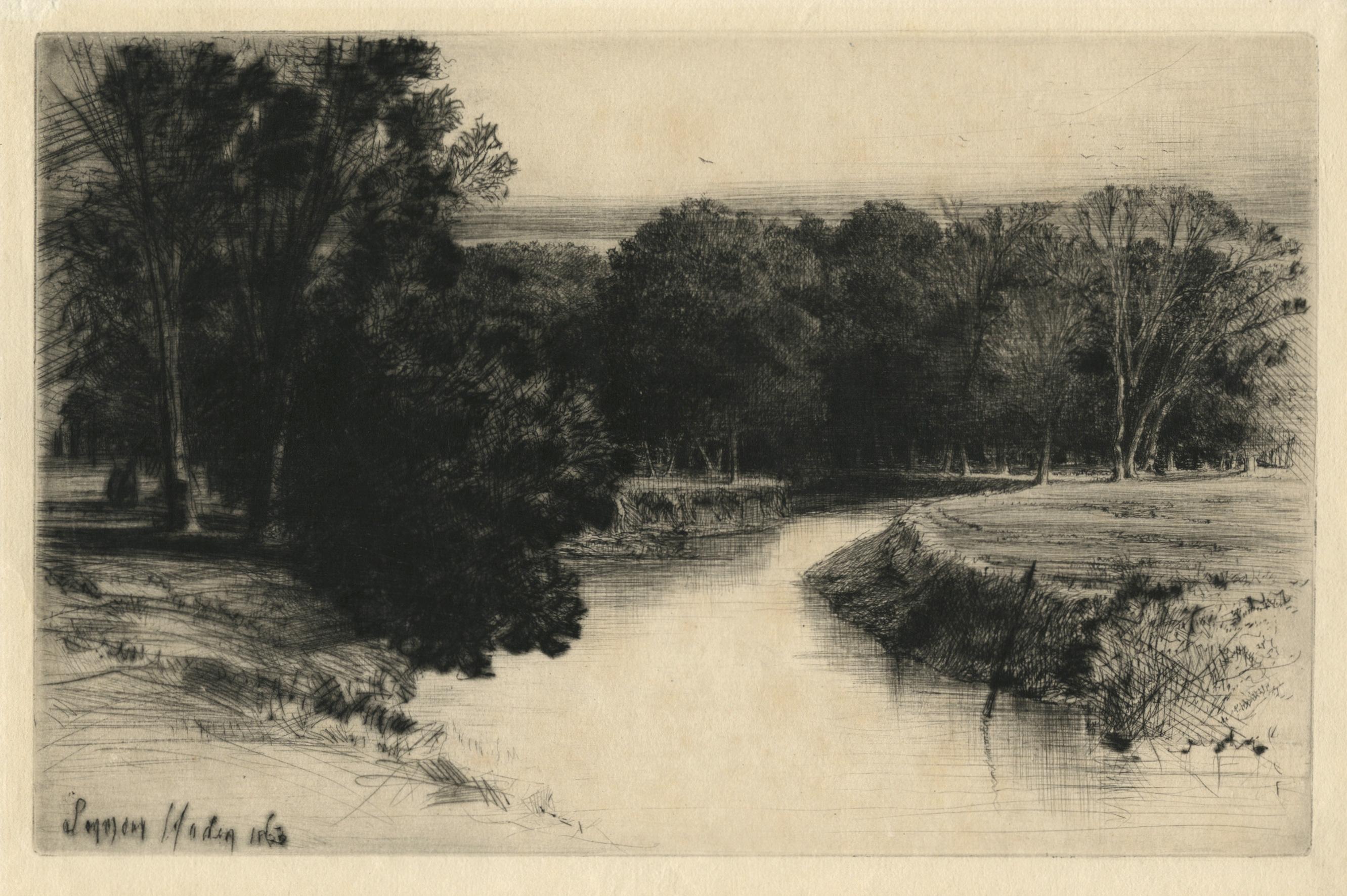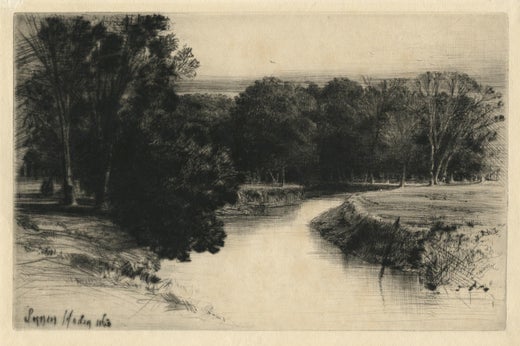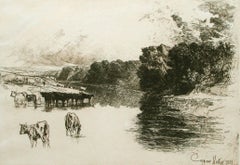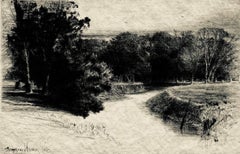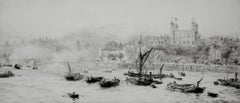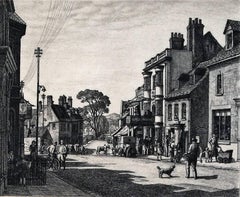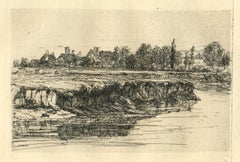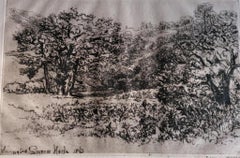Items Similar to Windsor
Want more images or videos?
Request additional images or videos from the seller
1 of 8
Sir Francis Seymour Haden, R.A.Windsor1898
1898
$760
$97522% Off
£581.09
£745.4722% Off
€665.15
€853.3222% Off
CA$1,071.69
CA$1,374.8722% Off
A$1,166.66
A$1,496.7022% Off
CHF 622.79
CHF 798.9722% Off
MX$14,084.22
MX$18,068.5722% Off
NOK 7,830.81
NOK 10,046.1122% Off
SEK 7,278.23
SEK 9,337.2022% Off
DKK 4,967.70
DKK 6,373.0422% Off
About the Item
Schneiderman catalog 186 state .xii. 13 1/4 X 17 1/2 (sheet 18 5/8 x 25 5/8). Edition of 50 in this state, published by the Fine Art Society. A fine impression printed on cream wove paper with full margins. Toning in the image, otherwise good condition. Signed in pencil. Housed in a 22 x 28-inch archival mat, suitable for framing.
Born in 1818, Sir Francis Seymour Haden was an etcher, collector and surgeon. He studied at the Derby School, Christ’s Hospital and University College in London. He also studied at the medical schools of the Sorbonne in Paris and at Grenoble. He became a member of the Royal College of Surgeons in 1842 and he was made a fellow in 1857. He was an honorary surgeon to the Department of Science and Art from 1851 to 1867 and in 1847 he settled into a private practice. Haden was a vice-president of the obstetrical society of London and one of the founders of the Royal Hospital for Incurables in 1850.
He was the first President of the Royal Society of Painter-Echers.
In 1858, Haden encouraged James McNeil Whistler to work from nature and consequently, Whistler dedicated his first set of etchings entitled “French Set”, to Haden. The etchings were printed by Auguste Delâtre in Paris and marketed, with some help from Haden, in London. In 1859 Whistler settled in London and often visited Haden’s Sloane Street home. Whistler executed a number of paintings and etchings of domestic scenes within Haden’s home, among them “Reading By Lamplight” and “Harmony in Green and Rose: The Music Room”. Haden’s old master prints and his vast knowledge of photography were a great influence in Whistler’s career. After an argument in 1867, Haden and Whistler never spoke again and during the same year, Whistler was expelled from the Burlington Club as a result of a complaint made by Haden.
Haden became the president of the Society of Painter-Etchers and he was partly responsible for the Rembrandt exhibition at the Burlington Fine Arts Club in 1879. His published works include, “The Etched Work of Rembrandt” (1879), “The Art of the Painter-Etchers” (1890) and “The Royal Society of Painter-Etchers (1891). In 1891 he was elected a member of the Athenæum and in 1894 his public service was rewarded with a knighthood. In 1905 his distinction was recognized abroad by honorary membership of the Institut de France, the Académie des Beaux-Arts and the Société des Artistes Français. He was awarded medals for etching at the Expositions Universelles in Paris in 1889 and 1900.
- Creator:Sir Francis Seymour Haden, R.A. (1818 - 1910, British)
- Creation Year:1898
- Dimensions:Height: 13.14 in (33.38 cm)Width: 17.5 in (44.45 cm)Depth: 0.5 in (1.27 cm)
- Medium:
- Movement & Style:
- Period:
- Condition:
- Gallery Location:Storrs, CT
- Reference Number:1stDibs: LU33521586413
Sir Francis Seymour Haden, R.A.
Sir Francis Seymour Haden CMG FRCS PPRE (16 September 1818 – 1 June 1910), was an English surgeon, best known as an original etcher who championed original printmaking. He was at the heart of the Etching Revival in Britain, and one of the founders of the Society of Painter-Etchers, now the Royal Society of Painter-Printmakers, as its first president. He was also a collector and scholar of Rembrandt's prints.
About the Seller
5.0
Recognized Seller
These prestigious sellers are industry leaders and represent the highest echelon for item quality and design.
Gold Seller
Premium sellers maintaining a 4.3+ rating and 24-hour response times
Established in 1977
1stDibs seller since 2016
729 sales on 1stDibs
Typical response time: 7 hours
Associations
International Fine Print Dealers Association
- ShippingRetrieving quote...Shipping from: Storrs, CT
- Return Policy
More From This Seller
View AllA Lancashire River.
By Sir Francis Seymour Haden, R.A.
Located in Storrs, CT
Schneiderman 203.viii. 10 7/8 x 15 7/8 (sheet 13 7/8 x 17 7/8). Illustrated: Print Collector's Quarterly 1 (1911): 27. A 1-inch printing fold in the left-hand side of the image, and ...
Category
Late 19th Century Landscape Prints
Materials
Etching
A Sunset in Ireland.
By Seymour Haden
Located in Storrs, CT
A Sunset in Ireland. 1863. Etching and drypoint. Schneiderman catalog number 47 state vii/xiv. 5 1/2 x 8 1/2 (sheet 6 7/8 x 9 1/2). An extremely rich impression with drypoint burr, p...
Category
19th Century Modern Landscape Prints
Materials
Drypoint, Etching
$1,600 Sale Price
20% Off
The Thames and the Tower of London
By William Lionel Wyllie
Located in Storrs, CT
The Thames and the Tower of London. 1924. Etching and drypoint. 6 3/8 x 14 3/4 (sheet 10 1/4 x 17 1/4). Mat line; otherwise fine condition. A rich impr...
Category
1920s Modern Landscape Prints
Materials
Drypoint, Etching
$975 Sale Price
22% Off
Wareham, Dorset
By Stanley Roy Badmin
Located in Storrs, CT
Beetles 36. 5 1/4 x 6 1/4 (sheet 9 1/4 x 11 1/4). Edition 50 for the Print Collector's Club. Exhibited: Royal Academy, 1934; Royal Society of Painter-Etchers and Engravers, 1934 and ...
Category
Early 20th Century Modern Landscape Prints
Materials
Etching
$1,250 Sale Price
21% Off
London Bridge.
By William Lionel Wyllie
Located in Storrs, CT
London Bridge, London. 1924. Etching and drypoint. 6 3/8 x 14 3/4 (sheet 9 7/8 x 17 1/4). Mat line; otherwise fine condition. A rich impression with dryp...
Category
1920s Modern Landscape Prints
Materials
Drypoint, Etching
$975 Sale Price
22% Off
The Pool of London.
By William Lionel Wyllie
Located in Storrs, CT
The Pool of London. c. 1915. Etching and drypoint. 7 7/8 x 15 7/8 (sheet 11 x 14 7/8 x 21 1/4). A rich impression with drypoint burr printed on the full sheet of simili-Japan paper. ...
Category
1910s Modern Landscape Prints
Materials
Drypoint, Etching
$1,500 Sale Price
23% Off
You May Also Like
"Bit of a River Bank" original etching
By Sir Francis Seymour Haden, R.A.
Located in Henderson, NV
Medium: original etching. This impression on laid paper was printed in 1868 for Philip Gilbert Hamerton's very scarce first volume of "Etching and Etchers". Image size: 4 x 6 1/4 inc...
Category
1860s Landscape Prints
Materials
Etching
Vue de La Tamise - Etching by Francis Seymour Haden - Late 19th Century
By Sir Francis Seymour Haden, R.A.
Located in Roma, IT
Vue de La Tamise is a black and White etching realized by Francis Seymour Haden in the Late 19th Century.
Titled in the lower
Image Size: 12x28
Very good impression.
Realized by...
Category
Late 19th Century Impressionist Figurative Prints
Materials
Etching
Twickenham Church
By Sir Francis Seymour Haden, R.A.
Located in Middletown, NY
A luminous first state impression, Hamerton's "Portfolio" edition. Etching and drypoint on cream wove paper, 7 3/16 x 9 15/16 inches (135 x 213 mm), wide margins. First state (of 5)...
Category
Mid-19th Century Realist Landscape Prints
Materials
Drypoint, Etching
La Roxerie - Original Etching by Sir Francis Seymour Haden - 1867
Located in Roma, IT
La Roxerie is an original modern artwork realized by the English artist Sir Francis Seymour Haden (1818 – 1910) in 1867.
Original Etching on paper.
Signed and dated on plate on th...
Category
1860s Modern Landscape Prints
Materials
Etching
Sunset in Ireland
By Sir Francis Seymour Haden, R.A.
Located in Middletown, NY
Drypoint etching on watermarked cream wove paper, 5 7/16 x 8 7/16 inches (39 x 215 mm), wide (perhaps full) margins. A very desirable, bright and richly inked impression, with the da...
Category
Mid-19th Century Realist Landscape Prints
Materials
Drypoint, Etching
A LANCASHIRE RIVER,
By Sir Francis Seymour Haden, R.A.
Located in Santa Monica, CA
SIR FRANCIS SEYMOUR HADEN (1818-1910)
A LANCASHIRE RIVER, 1881 (Schneiderman 203 viii/ix; Harrington 215 ii/ii)
Original etching with drypoint. Signed in pencil., image 11 x 16. A large sheet, 18 x 22 inches with 3 inch margins.
In very good condition.
According to British dealer...
Category
1880s English School Landscape Prints
Materials
Etching
